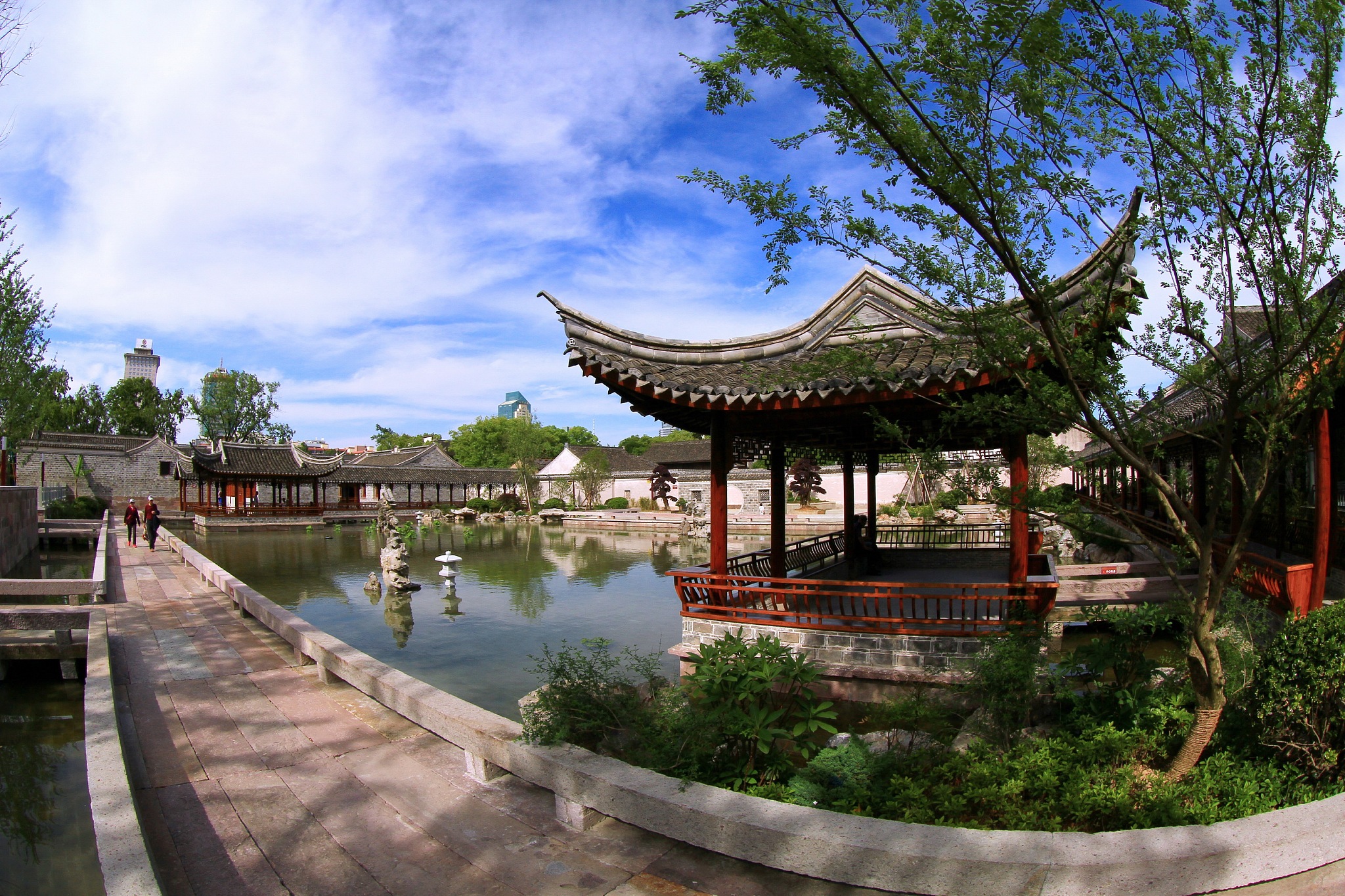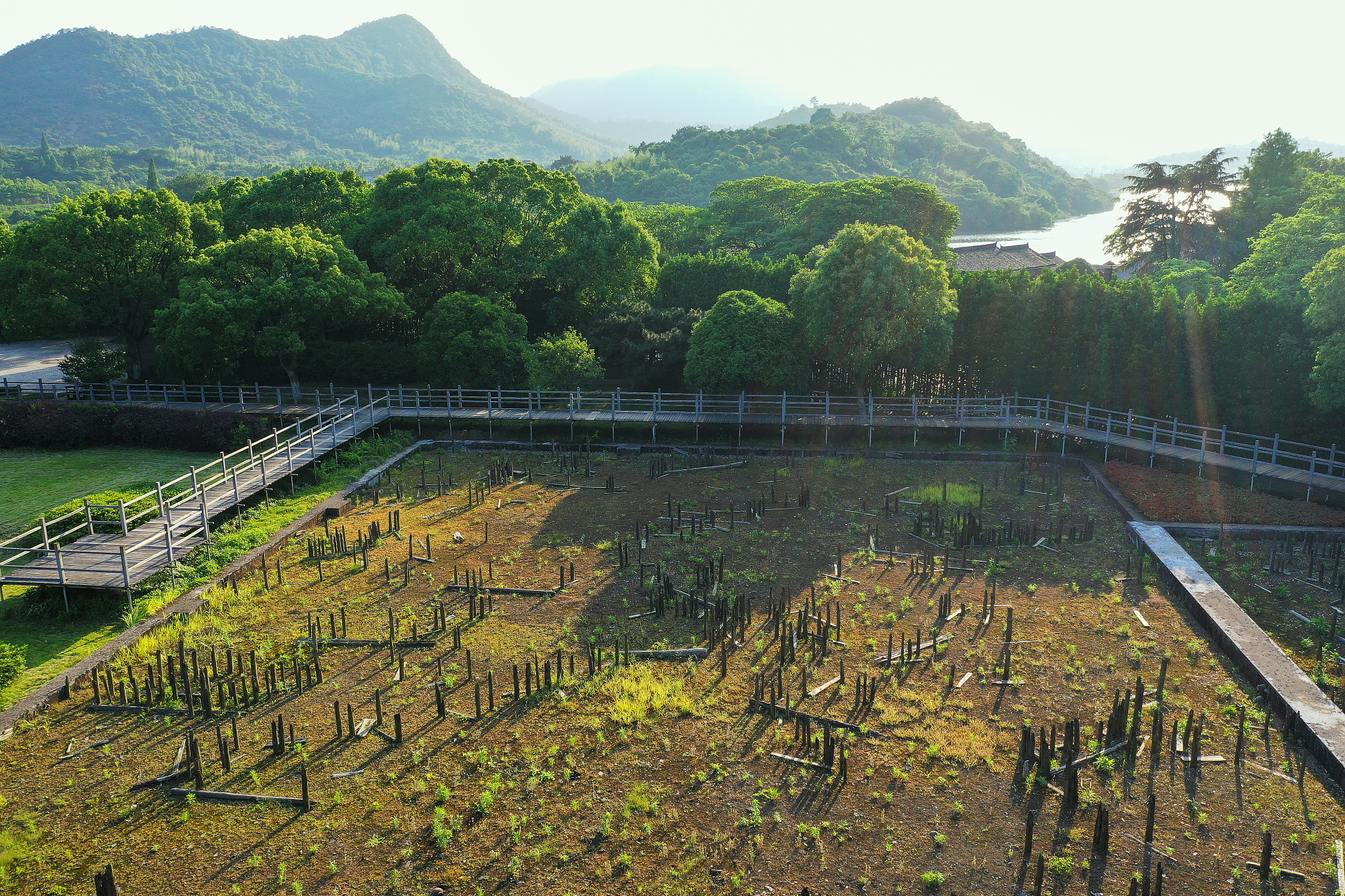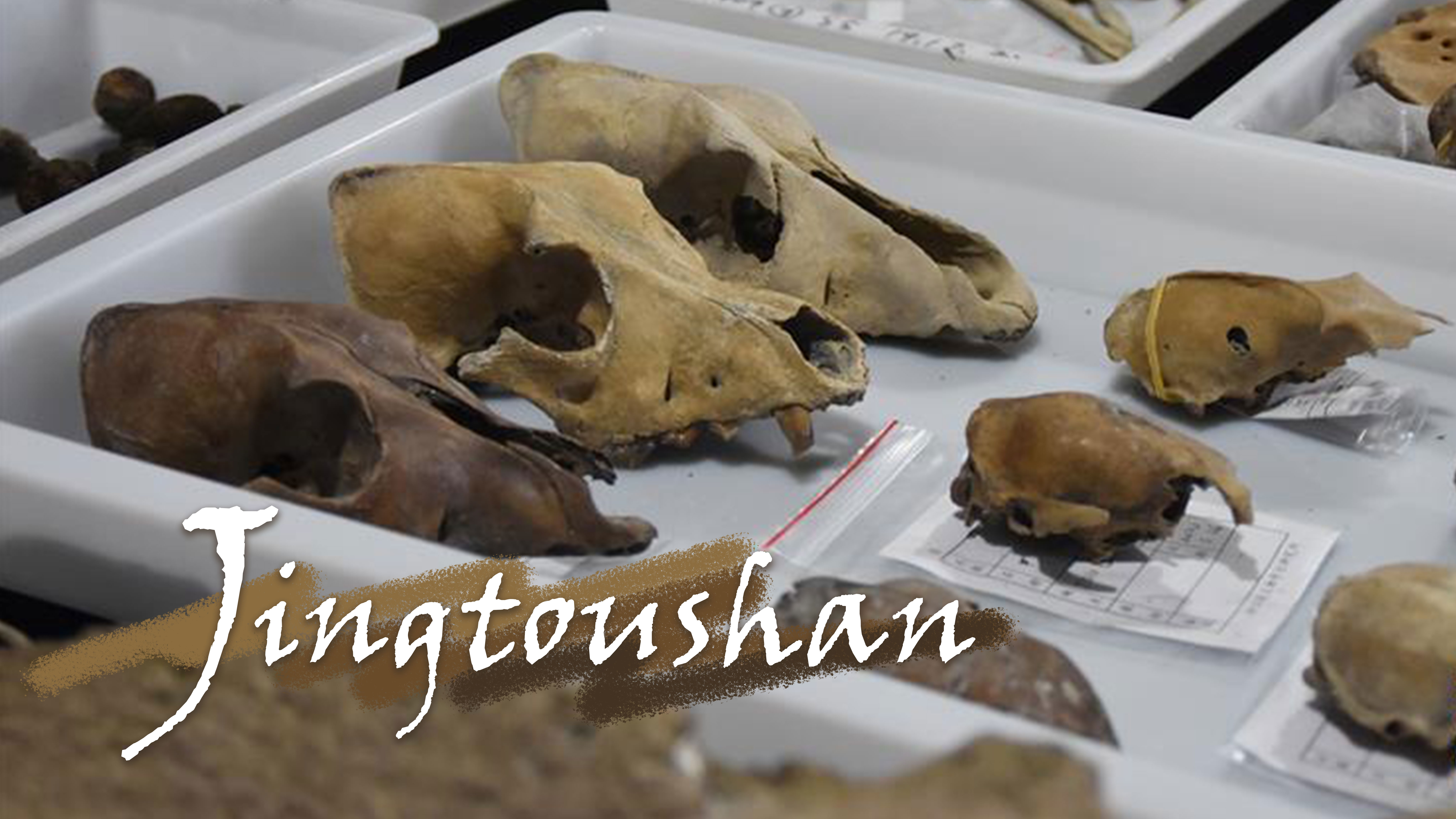Sandwiched between the ocean and mountains, Ningbo City in east China's Zhejiang Province is a time-honored coastal city with some popular historic and cultural attractions.
In 2018, Ningbo joined the "1-trillion-yuan GDP club" in 2018 – Chinese cities with annual GDP exceeding 1 trillion yuan ($156.3 billion). Tourism has made a remarkable contribution to its economic development.
Tianyi Pavilion: The country's oldest existing library
Tianyi Pavilion is most tourists' first stop in Ningbo, it was originally built in 1561 under the supervision of Fan Qin, a high-ranking official during the Jiajing period of the Ming Dynasty (1368-1644). It's now China's oldest existing private library with a collection of over 300, 000 ancient books and copies, 80,000 of which are considered rare, spanning 5,000 categories. It's also regarded as one of the three best-preserved ancient family libraries worldwide.

Tianyi Pavilion in Ningbo City was built in 1561. /CFP
Tianyi Pavilion in Ningbo City was built in 1561. /CFP
Tianyi Pavilion Museum was established in 1994, has become a must-see attraction in the city. Based on Tianyi Pavilion, the museum also includes Eastern Garden, the Chens' Ancestral Hall, the Qings' Branch Ancestral Hall, Calligraphy and Painting Hall and the Local Chronicles Hall.
It was given a National Cultural Relics Preservation Unit designation by the State Council in 1982 and listed as a National 5A Level Tourist Attraction by the Ministry of Culture and Tourism in 2018.

The 40,000-square-meter Hemudu Site is located in Yuyao County of Ningbo, east China's Zhejiang Province. /CFP
The 40,000-square-meter Hemudu Site is located in Yuyao County of Ningbo, east China's Zhejiang Province. /CFP
The 26,000-square-meter site is more than a scenic spot. Apart from its profound influences on libraries and books in China, it's also a window for tourists to get close to the culture and history of the area.
01:01

Have you heard of the mysterious Hemudu civilization (5500 BC to 3300 BC)? Ningbo is the birthplace of the Hemudu civilization, which is believed to be the origin of humanity in Ningbo and also a well-known cultural legacy in the world of archaeology.
The 40,000-square-meter Hemudu Site in Yuyao County of Ningbo, discovered in 1973, features an exhibition area and the original excavation site.
On May 30, 2020, archaeologists discovered an 8,000-year-old shell mound at the site of the Jingtoushan ruins in Yuyao, according to Xinhua. Carbon-14 tests showed the site is between 7,800 and 8,300 years old, which is 1,000 years earlier than the city's Hemudu culture ruins.
Ningbo also has picturesque natural attractions like Dongqian Lake, the largest natural freshwater lake in Zhejiang Province. Tourists visit the area for its intoxicating blend of picturesque mountains as well as clear waters.

Dongqian Lake in Ningbo City is the largest natural freshwater lake in Zhejiang Province. /CFP
Dongqian Lake in Ningbo City is the largest natural freshwater lake in Zhejiang Province. /CFP
Other attractions include Ningbo Museum, Baoguo Temple and Yandang Mountain. In 2019, Ningbo received 139 million domestic visits, up 12.2% year on year, according to the Ningbo Municipal Bureau of Culture, Radio, Television and Tourism.
(Cover image designed by Yin Yating)

